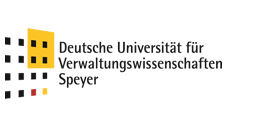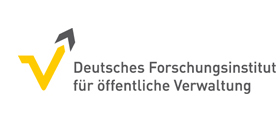Refine
Year of publication
Document Type
- Part of Periodical (15)
- Article (7)
- Part of a Book (5)
- Contribution to online periodical (4)
- Book (2)
- Conference Proceeding (1)
- Contribution to a Periodical (1)
- Doctoral Thesis (1)
Has Fulltext
- yes (36)
Is part of the Bibliography
- no (36)
Keywords
- EMRK (10)
- European Convention on Human Rights (5)
- Unionsrecht (5)
- Beitritt (2)
- ECHR (2)
- EU (2)
- EU-Beitritt (2)
- Europäische Menschenrechtskonvention (2)
- Europäische Union (2)
- Article 52(3) de la Charte (1)
Un bilan de la Charte doit également prendre en compte son interaction avec les autres textes internationaux de protection des droits fondamentaux. La Convention occupe une place centrale à cet égard, car chaque fois que les juges nationaux appliquent le droit de l’Union, ils doivent le faire dans le respect de la Convention. D’où l’importance de la cohérence entre la Convention et la Charte, car in fine, le contrôle du respect des droits fondamentaux dans un cas concret se fait à Strasbourg. Eu égard à cette réalité, le législateur de l’Union a instauré un double contrôle de cohérence entre la Charte et la Convention : le premier, interne à l’Union, s’exerce sur la base de l’article 52(3) de la Charte ; le second, qui le complète, est appelé à s’exercer à travers le contrôle externe par la Cour européenne des droits de l’homme, prévu par l’article 6(2) TUE. S’agissant du contenu des droits fondamentaux, le contrôle interne de cohérence a bien fonctionné. On ne peut pas en dire autant s’agissant de la méthodologie des droits. Dans la jurisprudence de la Cour de justice de l’UE, en effet, tout se passe comme si l’article 52(3) de la Charte ne concernait que le contenu des droits, à l’exclusion de leur méthodologie. Aussi cette jurisprudence génère-t-elle des divergences méthodologiques qui conduisent tantôt à des déficits de protection par rapport à la Convention, tantôt à la confusion juridique. Ces défaillances du contrôle interne rendent nécessaire la mise en place du contrôle externe.
Legal acts performed by EU Member States applying Union law come within the scope of the Convention and can give rise to adjudication by the ECtHR. A long series of judgments illus-trate the ECtHR’s approach regarding the application of Union law by the courts of EU Mem-ber States. The Convention and Union law are not two autonomous systems separated by a watertight fence. Both European Courts should therefore adopt a wholistic approach in this area, because only a wholistic view takes full account of the legal reality which is one of inter-action and intertwining. The ECtHR makes abundant use of EU law sources, thereby always explicitly referring to them. Three different categories of cases can be identified in how the CJEU goes about the Convention in its case-law.
The landmark judgment in the case of Bivolaru and Moldovan v. France, which concerned the execution of a European arrest warrant, provides a good illustration of the effects of the Con-vention liability of EU Member States for their implementation of EU law. These effects touch on such notions as cooperation, trust, complementarity, autonomy and responsibility. The two European courts have been cooperating towards some convergence of the standards applicable to the handling of EAWs. The Bosphorus presumption and its application in Bivo-laru and Moldovan show the amount of trust placed by the Strasbourg Court in the EU pro-tection of fundamental rights in this area. To the extent that their standards of protection coincide, the Luxembourg and Strasbourg jurisdictions are complementary. However, the two protection systems remain autonomous, notably as regards the methodology applied to fundamental rights. Ultimately, the EU Member States engage their Convention responsibility for the execution by their domestic courts of any EAWs.
Kann es ein harmonisches Miteinander von EuGH und EGMR ohne Beitritt der Europäischen Union zur Europäischen Menschenrechtskonvention geben?
Das ist die Frage, die sich seit Gutachten 2/13 stellt, mit dem der EuGH den Beitrittsprozess für unbestimmte Zeit unterbrochen hat. Die jüngere Vergangenheit
zeigt, dass grundrechtliche Alleingänge des EuGH durchaus
möglich sind, dass sie sich aber auch im Dialog der Gerichte überwinden
lassen, wenngleich mit einem größeren Aufwand und einem ungewissen Ausgang. Die externe grundrechtliche Kontrolle bleibt daher der Königsweg, auch wenn er sich in absehbarer Zeit wohl nicht verwirklichen lassen wird.
Erstaunlicherweise ist über die „Tragweite" von Grundrechten bis heute recht
wenig geschrieben worden. Der Begriff wird in Art. 52 Abs. 3 der EU-Grundrechtecharta verwendet und verweist auf einen Bestandteil der Rechte aus der Europaischen
Menschenrechtskonvention, die von der Charta ubemommen
wurden. Seine Verwendung in diesem Zusammenhang bietet Anlass fur Überlegungen
über die Stellung der Grundrechte im Unionsrecht, welche mit dem Lissabonner
Vertrag und vor allem der Grundrechtecharta eine neue Dimension erhalten haben
dürfte.
Grundrechtsschutz und gegenseitige Anerkennung im Raum der Freiheit, der Sicherheit und des Rechts
(2014)
Der Grundrechtsschutz gerät zunehmend in den Mittelpunkt der Diskussionen über die
gegenseitige Anerkennung von Gerichtsentscheidungen im Unionsrecht, wie auch die
neuere Rechtsprechung des EuGH und manche Reaktion darauf belegen. Es geht dabei
nicht nur um die Frage, welche Grundrechte, nationale oder europäische, angewandt werden sollen, sondern auch darum, wo sie zur Anwendung kommen sollen, im Ausstellungs- oder
im Vollstreckungsstaat? Bei der Beantwortung dieser Fragen ist das Wesen der Grundrechte sowie die besondere Rolle, die ihnen dementsprechend in jedem Rechtssystem zukommen soll, zu berücksichtigen,
will man die Grundrechte nicht zu „einfachen Rechten“ verkommen lassen.
This article offers an in-depth analysis of the relationship between European law and the
case-law born of the European Convention. The author addresses the tension between
the drive for legal certainty and the need to expand fundamental rights. By offering an
overview of the legal reality that this tension has created, the author seeks to find the balance
between needless plurality and rigid certainty. Through this overview, the author argues
that the promotion of fundamental rights must be organised along lines of harmony and
not of uniformity. To do this, he offers a detailed analysis of the respective approaches
to the detention of asylum seekers and to the privilege against self-incrimination. The
article thus traces the increasingly inter-referential nature of Strasbourg and Luxembourg
jurisprudence, arguing that this trend has the potential to promote fundamental rights, as
long as the jurisdiction of human rights’ legislation is significantly expanded. The author
goes on to discuss the EU Charter of Fundamental Rights, looking at the ways in which
it grew out of jurisprudence from both legal systems and how this cross-pollination may
change the expansion of fundamental rights in a wider sense.
The hybrid EPPO structure is operating under a hybrid set of fundamental rights, thus calling into question the well-established principle of the single set of norms applicable throughout criminal proceedings. Moreover, the system is characterized by a distortion of the commonly applied logical link between liability for violations of fundamental rights and control over the actions entailing those violations. EU Member States risk being held accountable under the Convention for actions on behalf of the EPPO which they did not fully control and which were subject to a different corpus of fundamental rights. The EU, for its part, takes the risk of seeing EPPO prosecutions being invalidated by domestic courts applying a Convention protection level which may be higher than the Union level. The only way to minimize the impact of these distortions is for the EU to become a Contracting Party to the Convention, along with its own Member States. This would do away with the ambivalence of the legal framework characterizing the protection of fundamental rights under the EPPO Regulation. It would also contribute to a better implementation of the principles of the rule of law and procedural fairness, advocated by the Regulation itself. Such a move would seem all the more important in light of the fact that if the EPPO proves successful, its competence might be extended in the future to other areas.
Mit dem Beitritt der Europäischen Union zur Europäischen
Menschenrechtskonvention ist der Vorgang gemeint, bei dem die EU Vertragspartei der EMRK werden soll mit der Folge, dass auch sie damit der Gerichtsbarkeit des Europäischen Gerichtshofes für Menschenrechte
unterworfen sein wird. Mehr als dreißig Jahre ist davon
schon die Rede, aber der Lissabonner Vertrag, der die EU zu diesem Beitritt auffordert und dazu die Rechtsgrundlage
schafft, hat diesem Projekt einen neuen Elan gegeben.

